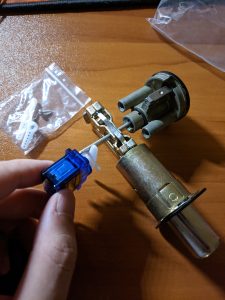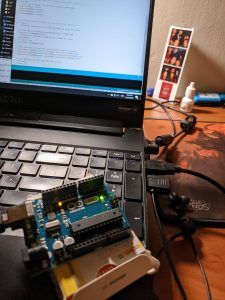This week I wanted to debug the locking mechanism and determine as a group what we wanted to do about using an Arduino in our design. On that latter point, it seems that Alex Li was able to get the Raspberry Pi working with the NFC Shield module directly without needing an Arduino middleman. It invalidates some of the work I’ve been doing on the Arduino, but overall this is a gain for the group. A lot of latency and redundancy concerns stemmed from the inclusion of the Arduino in our design (as it was simply acting as a controller between the NFC Shield, the Raspberry Pi, and the locking mechanism), so removing it will allow the system to be more lightweight.
As for the former issue about the lock, I demonstrated the mechanism in person to Alex and Michael, and the problems we currently faced in getting it to work. We determined that while there may be enough torque in the small servo motor to operate the lock, we would most likely need a 3D-printed cap that fits the door lock tailpiece and the servo motor, but doing so would require some extra design time. In the meantime to be safe, we’ve decided to get a stronger motor that preferably will have a better way to interface with the mechanism we want the motor to turn to avoid needing to spend this extra design time. Hopefully we’ll be able to put in an order request by Wednesday by the latest to get it as soon as possible.
I also went down to TechSpark in person on Wednesday to open discussions about our design plans, and we’ve received a general go-ahead with the estimated dimensions of parts we’ll need. The overall casing looks to be a 6-8 hour job in the self-serve 3D printers, so we can begin the CAD on that side too.
Open issues: finding this mystical lock that works for our design. I’m doubtful by what I’ll be able to find online. We may need to proceed quickly with the 3D designs should I fail to find something that fits our tailpiece.
Next week will be about determining if it’s more possible to find a fitting motor endpiece or if we need to manufacture one ourselves. I also need to finish a purchase request. Finally, I just received the extra Raspberry Pi, which I’m thinking of setting up so we have a backup. No photos from me this week, but next week we’ll hopefully have more to show.



